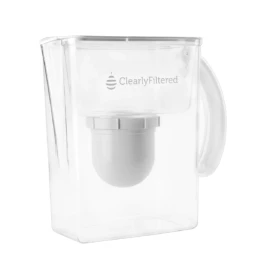Kidney stones are often painful and, if left unaddressed, can lead to more severe conditions such as obstruction of urinary flow and permanent kidney damage. Recurrent kidney stones are one of the common causes of CKD. Kidney stone development is the composite result of multiple factors, including genetic, dietary, and electrolyte imbalances and environmental factors. But is there a relation between occupation and kidney stones? Here, we will discuss the role of work in kidney stone formation.
By Majd Isreb, MD, FACP, FASN, IFMCP
Calcium oxalate stones are the most common type of kidney stone. It is often thought that it is due to multiple factors, including genetics, high sodium intake, diminished water intake, and increased animal protein and dysbiosis. This compilation leads to the formation of acidic urine supersaturated with calcium and oxalate. But does your type of work increase your risk for kidney stone formation?
Occupation and kidney stones
When you think about the type of jobs associated with increased risk for kidney stone formation, it is essential to consider the factors associated with increased risk of kidney stones and how they are affected by various jobs.
Therefore, it is crucial to understand the patient’s job and how it affects their access to water and bathroom facilities. It is also essential to consider exposure to high ambient temperatures and chemicals.
Meet Candice!
Candice (not her real name) is a patient with a history of multiple calcium oxalate kidney stones. Despite numerous attempts at improving her dietary intake, oxalate, and measures to decrease urinary calcium and oxalate supersaturation, she continued to have kidney stones.
Candice works as a visiting nurse for a home health agency. With ever-growing demands to see more patients, she has not been able to drink the necessary amount of water to decrease her risk for kidney stones. She feels uncomfortable going to her patients’ homes and using their bathrooms.
Lack of access to filtered water and bathroom facilities plays a vital role in increasing the urinary concentration of calcium and oxalate (and other minerals). These types of jobs increase the risk of forming kidney stones.
In fact, this study found that healthcare professionals are at higher risk of kidney stones. The risk was exceptionally high for surgeons in the operating rooms.
Jobs in higher temperatures
Exposure to higher temperatures has been linked higher risk for kidney stone formation. Temperature higher than 86oFincreases the risk of kidney stones after less than three days. Physical jobs that require spending a significant amount of time outdoors in warmer climates can be associated with increased perspiration and more concentrated urine. This can raise the risk of kidney stone formation.
Sedentary jobs
Those who work indoors in an office environment are not safe either. The link between a sedentary lifestyle and metabolic syndrome is well established. Since metabolic syndrome is associated with increased urinary calcium, uric acid, oxalate, and decreased urinary citrate, it has been linked to an increased risk of kidney stones.
Office jobs that involve lots of sitting can aggravate metabolic syndrome, increasing the risk of kidney stones. These jobs include computer technology, administrative options, communication, and transportation, for example.
What about astronauts?
According to NASA, astronauts have reported postflight kidney stones more than 30 times. There is a reason why astronauts are at increased risk of kidney stone formation. Living and working in a zero-gravity environment accelerate bone loss and muscle atrophy. This has been found to increase urinary calcium and calcium oxalate supersaturation.
In addition, many astronauts may not drink enough water while in space. This leads to further increased calcium and oxalate excretion. Finally, astronauts consume a higher amount of processed food containing higher sodium which increases the risk of kidney stones.
Exposure to oxalic acid at work
Oxalic acid is a colorless, odorless powder. It is used as a rust remover, radiator cleaner, and ink stain remover. Oxalate, the ionized form of oxalic acid, is a simple chemical compound that humans cannot break down. Therefore, it is a waste product that the body must eliminate. The kidneys are the primary site of that elimination.
Higher oxalate exposure is toxic, especially to the kidneys. Calcium oxalate stones are the most common type of kidney stones. Increased occurrence of kidney stones was identified in railroad workers who were exposed to oxalic acid in Scandinavia.
Join us to end the kidney disease epidemic
The Integrative management of kidney stones is complex and requires collaboration between an experienced Integrative nephrologist and trained dietitians or nutritionists. Patients in high-risk occupations should strive to increase filtered water intake, when possible, to about 3 liters a day (depending on size). They should also improve their physical activity, limit exposure to toxic chemicals and get frequent bathroom breaks. Those who have demanding jobs that don’t allow them to drink enough may benefit from taking potassium citrate supplementation three times a day.
The bottom line
There is a significant link between occupation and kidney stones. Various jobs can increase the individual risk of kidney stone formation. This can add another layer to the integrative medicine approach to kidney stone prevention.






